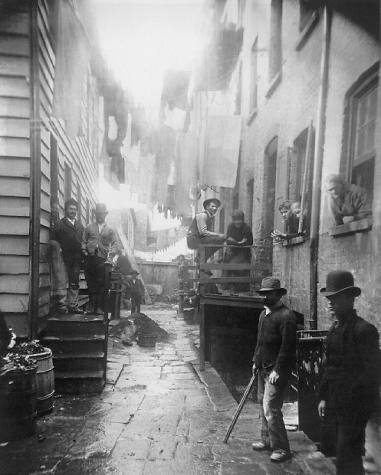New York City seems to be in limbo as its communities as well as law enforcement agencies search for answers as to how to bridge the obvious disconnect between the communities and the civil servants sworn to protect the people. So that we may better understand the dynamics of the day and bring it all into proper perspective, there are five insightful points to be made that delves into the history of New York City, its policing, and the prospect of the city’s future.
The first point brings us back into the 1800’s and reminds us that we have been here before, when the city has been forced to endure through a volatile climate of social disorder. A social disorder that serves to stretch the fabric of morality in the people and the institutions that compose the base of the city’s infrastructure. Five Points was a neighborhood in the central lower area of Manhattan that was home to mostly poor immigrants that began arriving into the city in the early 1820s. Its influx reached its heights in the 1840s when Ireland suffered through the great potato famine, which was a catastrophic failure of the nations staple food crop. The famine results in disease and starvation that killed at least one million people in Ireland and forced another million to flee the country. By 1835, New York City had already been receiving more than 30,000 Irish immigrants a year.
The obvious effects of the immigrant surge included growing ghetto’s and increased ethnic tensions. The homeless population shot up, and in 1853 the police force sheltered more and more people, including 25,000 homeless residents in one six-month period. The new urban mix proved volatile in crowded districts where residents crammed into tiny apartments and roamed chaotic streets. An expanding saloon culture hosted violent works of neighborhood gangs highlighted in the Martin Scorsese historical film,” Gangs of New York” (2002).
At Five Points height only certain areas of London’s East End vied with it in the Western world for sheer population density, disease, infant and child mortality, unemployment, prostitution, violent crime, and other classic ills of the urban destitute. Five Point is alleged to have sustained the highest murder rate of any ghetto in the world, and is said to have had a murder every night for 15 years straight.
The social disorder on display at Five Points earned Irish Catholic immigrants stereotypes as being “uncilivilized”. New York prison growing population began to reflect a city in which residents weighed the consequences of property crime against their situation in poverty-stricken, jobless families. In 1825 New York.common council authorized Sing Sing’s construction just thirty miles north of the city. Convinced that the city’s overwhelming Irish immigrants were hardly” free, white persons” fit for self-government. (4) With this form of malicious propaganda at play, Irish Americans were frequetly discriminated against in housing, jobs, and education. Reflecting back on the early history of this very city, one can easily concur that the Irish American plight in the 1800’s runs parallel to the present day plight of Black and Brown people that now constitute New York City’s urban communities.
Point Two takes us through the early social reform efforts of the police while giving us a greater understanding of the job description of policing. The Webster’s Dictionary definition of police is”an organization that controls and regulates the affairs affecting the general order and welfare of any unit or area.” As crime ran rampant in New York City urban communities, city officials responded to the public perception of a growing under-class of potential lawbreakers. In the 1830’s several cities began police reform in earnest. In New York however, reforms came slowly. The city still had no professional police force by the 1840’s. A complex network of pickpocket, fences, opium addicts, and confidence men flourished as city crime fighting efforts staggered. The early reform effort seemed to suggest that state an city officials struggled through finding solutions to combat the climate of crime in the city, and appeared











One Comment
This article compares apples to oranges. Slavery did not end in New York City until 1827. Black poverty in New York City has been ongoing. The NYPD has always targeted black people. There are literally zero similarities.